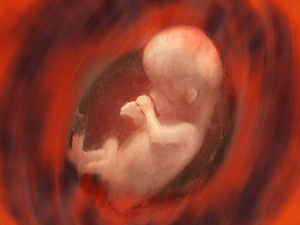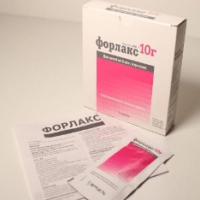 Do you wish to understand how your unborn child’s lungs develop? During fetal growth, the development of lungs is a complex procedure that takes place throughout gestation and ends just before birth. Continue reading to understand the important aspects and stages of lung development in the fetus.
Do you wish to understand how your unborn child’s lungs develop? During fetal growth, the development of lungs is a complex procedure that takes place throughout gestation and ends just before birth. Continue reading to understand the important aspects and stages of lung development in the fetus.
What Is Fetal Lung Development?
Fetal Lung development begins at around four weeks of gestational age, during the embryonic phase. During the very early stage of development your baby will be very tiny and will only be a small bundle of undifferentiated cells. Around the fourth week of gestation, a differentiation phase separates cells into a few unique layers, one layer forms the organs. Lungs develop from these segregated cells
What Are The Stages Of Fetal Lung Development?
Fetal lung development can be divided into five phases. Let us know them in detail:
1. Embryonic phase: During this phase, the cells or tissues that will take the form of larynx and the trachea from the layer differentiated to form organs of the foregut. The lung bud develops from the trachea. Two little buds are formed from the trachea, one becomes the left lung, and the second one becomes the right lung eventually. The separation of the two lung buds happens when the esophagotracheal ridges fuse to form the esophagotracheal septum. At around 8-weeks, the lung buds subdivide and form the bronchopulmonary segments.
- Lung buds are lined by epithelium that is derived from endoderm, which is differentiated into:
- Respiratory epithelium that lines the airways
- Specialized epithelium that lines the alveoli
- The innervation of the lungs is derived from ectoderm
- The pulmonary blood vessels, smooth muscle, cartilage and other connective tissues are originated from mesoderm
2. Pseudoglandular phase: The pseudo glandular stage happens between the seventh and sixteenth week of embryonic development. Further branching of the lung buds into several tiny units characterize this phase. Eventually, every bud grows into an independent respiratory unit. It comprises of a bronchiole and various different capillary vessels. They provide blood to the lungs for oxygen.
During this stage, the principal separation of lung epithelium takes place. By the thirteenth week of gestation, cilia appears in the proximal airways.By the sixteenth week of pregnancy, branching out of these bronchial tubes stops and by this time the fetus has the same number of branches found in an adult lung, despite the fact that the tubes themselves are still very tiny
3. Canalicular phase: The Canalicular stage takes place between the 16th and 25th week. During this time, the gas-exchanging segment of the lung is formed and vascularized.Lung tissue keeps on growing, adding millions of little new air sacs, termed alveoli, to the growing lung.
As each lung grows further, arteries and vein branches out follow its growth, supplying blood to the new tissues. In due course, small capillaries grow around each alveolus. This brings the growing baby’s blood closely in contact with the lining of the cells. An air and blood barrier develops and this permits oxygen to enter the blood and carbon dioxide to come out of respiratory capillaries into the lungs for exhalation.
Different kinds of tissues develop in the fetus’ lungs during the canalicular phase. By 20 to 22 weeks of gestation, two types of special cells, known as type I and type II cells, develop and line the alveoli. In due course of time air-transporting tissues can be distinguished from the tissues carrying gas
4. Saccular phase: The saccular stage includes the period from 26 weeks of gestation until term that is around the 36th week of gestation. During this stage, more alveoli are formed, and therefore, the tissues between them get to be distinctly compacted and the lining of the alveoli turns out to be considerably thinner.
During this period, the lining cells start to take on the qualities required for their function after the birth. Type I cells turn out to be very thin, which helps to allow the exchange of gases between air and the blood after birth. Type II cells develop the features they need to deliver a highly specialized chemical called surfactant. Surfactant is a soapy liquid that contains both protein and fat, which helps to keep the lung tissue delicate and prevents it from:
- Sticking to itself
- Tear during exhalation or lung compression
Surfactant is essential during delivery because it permits the amniotic fluid in the lungs to clear out and fill the lungs with proper air. Surfactants form a coating on the inner surface of each alveolus and avoid it from crumpling.From as early as the 24th week of pregnancy, the type II cells contain a small quantity of surfactant.
From that time until birth, as a part of preparing the baby for his first breath outside the womb, these cells manufacture and store additional surfactant. Babies born prematurely are more liable to pulmonary issues and breathing issues as the lungs will collapse if they are born before the proper development of surfactant
5. Alveolar phase: Alveolar phase is the final phase of lung development. The duration of this phase starts just before birth and extends into the early childhood. Apart from extra production of surfactant, development of lung development during this period is characterized by the formation of more alveoli.
This permits the tissues carrying gas of the lungs to grow and make them proficient in moving more air as the baby grows. At birth, only about one-eighth to one-sixth of adult number of alveoli are present in the baby’s lungs. Air sacs continue to form until the child is around 8 years old. Therefore, around 95 percent of alveoli are formed after birth









